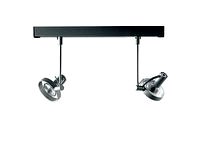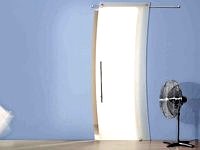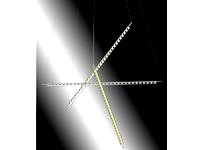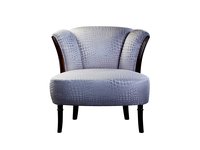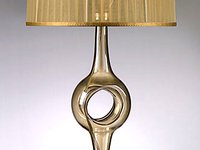TECHNICAL022EN
322
323
03
Introduction
18
Wall-mount devices
229
DIN-Rail mount modules
297
Supervision
311
Tools
315
Sales kit
321
Technical section
331
General terms of sale
335
General index
KNX technology
TECHNICAL SECTION
KNX systems realize decentralized building automation; therefore, neither a central
unit nor a supervising PC for control are required. Each device is fitted with an
electronic part, which allows bus communication with all other devices on the bus,
processes the received information or transmits the stored working parameters and
the logics required for the completion of its task.
Communication
Communication between KNX devices occurs in digital form, by means of serial
transmissions of organized information, called “telegrams”. A telegram includes the
main information to be transmitted – e.g. a switch on or switch off command, a
numerical value corresponding to a physical size detected by a sensor, etc. – and
a series of accessory information required to guarantee an efficient, error-free
communication. Any telegram, which is not duly received, can be repeated up to
three times by the transmitting device. In order to avoid collisions between telegrams
being sent out at the same time along the same bus from different devices, the
CSMA/CA (Carrier Sense Multiple Access / Collision Avoidance) protocol is used.
The information transmission speed occurs at 9600 bit/s, which makes it possible to
avoid bus line resistor terminations.
Transmission medium
The family of Ekinex® TP bus devices uses twisted-pair signal cables to transmit
data; the correct communication is guaranteed by employing bus cables with 1 or
2 conductor pairs made in accordance with KNX Association’s TP1 specifications.
Connecting the devices
Ekinex® devices are connected to the signal bus cable by means of the KNX bus termination
block. The termination block and the cable form part of a convenient, fast-connection
system aimed at eliminating errors: the cable has rigid connectors and the termination
block is fitted with holding springs (instead of screws); besides, the termination block is
formed by two elements having the same colour-coding (black/red) of the conductors to
be connected. Each stripped bus conductor will be simply inserted in place, where it will
stay firm thanks to the provided holding spring. Each polarity has 4 connection areas and
the termination block may be extracted from its seat; Thanks to these two characteristics,
the removal of any device from the bus cabling does not determine the interruption
of communications with the remaining devices. The termination block is also used for
branching cable segments on the same bus.
4 mm
The transmission medium utilized by
Ekinex® devices are standard KNX TP1
cables in the 2 or 4 conductors version
The Ekinex® devices are connected
to the KNX network via the bus
terminal included in every
appliance supplied.
Installation
KNX bus cables can be laid underneath the 230 Vac power cables along the same
duct, provided they are kept isolated. Should the insulating sheath be removed, a
distance of at least 4 mm between cable types must be guaranteed.
Topology
The smallest KNX system may include a single bus line along which up to 64 devices
can be connected. The line must be equipped with the special bus power supply,
which provides the necessary SELV voltage for the system to work. The effective
number of bus devices that can be connected to the line is determined at project
level and may vary depending on the voltage supplied by the bus power supply and
on the electrical absorption of each device on the bus. Since each Ekinex® device
can process multiple functions, a single-bus line can suffice to control an apartment,
a detached house or even a larger building with a limited number of bus functions.
Next to a simple single-line configuration, a bus line can be subdivided into
more segments, thus obtaining a star-shaped or a tree-shaped topology, or any
combinations of the two.
Adding line couplers, allows the system to expand to accommodate for larger
buildings and/or higher numbers of required bus functions. Connecting more lines
between them by means of couplers and a backbone line constitutes an area. An
area is formed by a backbone line, up to 15 secondary lines and by all the devices
connected along them. A unique number between 1 and 15 characterizes each
secondary line. With little less than 1000 connectible KNX devices, an area permits
the handling of a medium/large size system.
Bus
device n.63
Bus
device n.64
KNX Bus line
Bus
power supply
Bus
device n.1
Main bus line
Bus
device n.2
Bus
device n.3
Bus line n.1
Bus line n.2
Line coupler
n.1
Line coupler
n.2
Bus
device n.1
Bus
power supply
Bus
power supply
Bus
device n.2
Bus
device n.2
Bus
power supply
Bus
device n.1
Bus
device n.3
Bus
device n.2
Bus
device n.64
Bus
device n.63
Bus
power supply
KNX Bus line
Bus
device n.1
Bus
device n.64
Bus
device n.64



